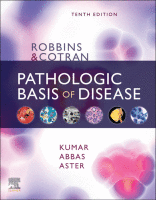Physical Address
304 North Cardinal St.
Dorchester Center, MA 02124

The adult pancreas is a transversely oriented retroperitoneal organ extending from the C-loop of the duodenum to the hilum of the spleen ( Fig. 19.1A ). Although the organ gets its name from the Greek pankreas (“all flesh”), it is…

The Liver and Bile Ducts The normal adult liver weighs 1400 to 1600 g. It has a dual blood supply, with the portal vein providing 60% to 70% of hepatic blood flow and the hepatic artery supplying the remaining 30% to…

The gastrointestinal (GI) tract is a hollow tube extending from the oral cavity to the anus that consists of anatomically distinct segments including the esophagus, stomach, small intestine, colon, rectum, and anus. Each of these segments has unique, complementary, and…

Diseases of the head and neck range from the common cold to uncommon neoplasms of the ear and nose. The examples discussed in the following sections are organized based on the primary anatomic site at which they occur, that is,…

The lungs are ingeniously constructed to carry out their cardinal function, the exchange of gases between inspired air and blood. Developmentally, the respiratory system is an outgrowth from the ventral wall of the foregut. The midline trachea develops two lateral…

In this chapter, we will first consider diseases of red cells. By far, the most common and important are the anemias, red cell deficiency states that usually have a nonneoplastic basis. We will then complete our review of blood diseases…

The components of the hematopoietic system have been traditionally divided into the myeloid tissues, which include the bone marrow and the cells derived from it (e.g., red cells, platelets, granulocytes, and monocytes), and the lymphoid tissues, consisting of the thymus,…

The human heart is a remarkably efficient, durable, and reliable pump, propelling more than 7500 L of blood through the body each day, and beating more than 40 million times a year—the wellspring for tissue oxygenation, nutrition, and waste removal. In…

Vascular pathology is responsible for more morbidity and mortality than any other category of human disease. Although the most clinically significant lesions involve arteries, venous disorders are not inconsequential. Two principal mechanisms underlie vascular disease: Narrowing (stenosis) or complete obstruction…

Children are not merely little adults, and their diseases are not merely variants of adult diseases. Many childhood conditions are unique to, or at least take distinctive forms in, this stage of life and so are discussed separately in this…